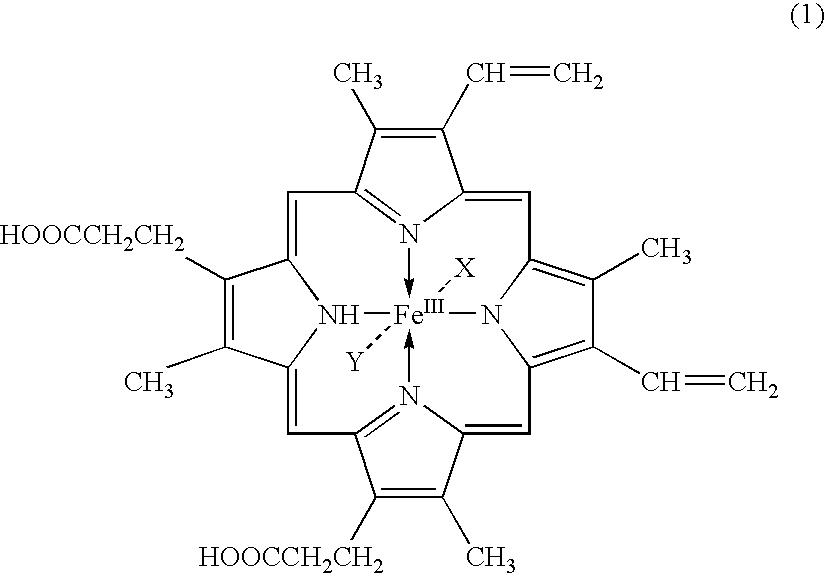Ultra-sensitive chemiluminescent substrates for enzymes and their conjugates
a chemiluminescent substrate and ultra-sensitive technology, applied in the field of ultra-sensitive chemiluminescent substrates for enzymes and their conjugates, can solve the problems of inability to reproduce, inability to always guarantee the obtained data, and inability to mix stable,
- Summary
- Abstract
- Description
- Claims
- Application Information
AI Technical Summary
Benefits of technology
Problems solved by technology
Method used
Image
Examples
example i
This example illustrates the synthesis of phenyl 10-methyl (D3) acridan-9-carboxylate Synthesis of methyl acridin-9-carboxylate (67):
[0181]Into a 100 mL round bottom flask equipped with magnetic stirrer and heating mantle was charged 5 parts of acridin-9-carboxylic acid hydrate (66) and 35 mL of thionyl chloride. The reaction mixture was heated at reflux for 3 hrs and gave reddish brown solution. Excess thionyl chloride was removed under reduced pressure and dried under vacuum to yield golden yellow solid which was dissolved in a solution of 2.82 parts of pyridine in 80 mL of dichloromethane under argon atmosphere and cooled to about 5° C. (ice-water). A solution of 2 parts of methanol in 20 mL of dichloromethane was added over 10 min to the solution and stirred for 30 min. The solution was stirred for 20 hrs and washed with 2×100 parts of deionized water. The organic layer was separated, dried over anhydrous Na2SO4 and filtered. The solution was concentrated under reduced pressure ...
example ii
This example illustrates the synthesis of phenyl (D5) 10-methyl (D3) acridan-9-carboxylate:
[0193]The synthesis of phenyl (D5) 10-methyl (D3) acridan-9-carboxylate is achieved by following the same method as in Example I, using 0.48 parts of acid chloride (71) and 0.2 parts of deuterated phenol. The following structure of the isolated product, 0.275 parts, was confirmed by NMR.
[0194]
example iii
This example illustrates the synthesis of 2,2,2-Trifluoroethyl 10-methyl (D3) acridan-9-carboxylate:
[0195]Following the same method as in Example I, 2,2,2-Trifluoroethyl 10-methyl (D3) acridan-9-carboxylate was prepared from 0.48 parts of acid chloride (71) and 0.2 parts of 2,2,2-trifluoroethanol. The following structure of the isolated product, 0.275 parts, was confirmed by NMR.
[0196]
PUM
| Property | Measurement | Unit |
|---|---|---|
| temperature | aaaaa | aaaaa |
| temperature | aaaaa | aaaaa |
| temperature | aaaaa | aaaaa |
Abstract
Description
Claims
Application Information
 Login to View More
Login to View More - R&D
- Intellectual Property
- Life Sciences
- Materials
- Tech Scout
- Unparalleled Data Quality
- Higher Quality Content
- 60% Fewer Hallucinations
Browse by: Latest US Patents, China's latest patents, Technical Efficacy Thesaurus, Application Domain, Technology Topic, Popular Technical Reports.
© 2025 PatSnap. All rights reserved.Legal|Privacy policy|Modern Slavery Act Transparency Statement|Sitemap|About US| Contact US: help@patsnap.com



